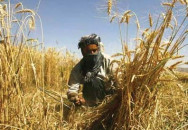Lower coal duties bring respite
Expected to alleviate pressure on cement sector facing a decline of 24% YoY

The cement sector in Pakistan, particularly in the northern region, is poised to receive a much-needed respite as Afghanistan recently announced a reduction in duty and royalty on coal. This decision is expected to alleviate the mounting pressure faced by the industry, paving the way for potential relief and improved prospects.
According to the Ministry of Mine and Petroleum of Afghanistan, in a bid to mitigate the impact of falling global coal prices, the Afghan government has decided to lower coal royalties by $5 per tonne and customs tariffs by $15 per tonne, as stated in a report by JS Global research. Analysts predict that this move will have a positive impact on cement companies based in the north, potentially translating to a reduction of approximately Rs5,800 per tonne. Assuming a Pakistan rupee to US dollar exchange rate of 290 in Afghan coal prices, this reduction would bring the price down to around Rs44,000 per tonne, as highlighted by cement sector analyst Waqas Ghani Kukaswadia from JS Global.
The decline in large-scale manufacturing (LSM) by 9.39% year-on-year during the first 10 months of fiscal year 2023 has affected various sectors, with cement being one of the major losers. The plunge in the LSM Index is primarily attributed to declines in textile (3.5%), automobiles (2%), food (1.5%), pharmaceuticals (1.4%), cement (0.9%), tobacco (0.7%), and petroleum products (0.8%). Cement production itself has witnessed a 24% year-on-year decrease. Elevated commodity prices have led to a slump in construction activities across the country, resulting in a 16% year-on-year plummet in cement dispatches during the first 11 months of FY2023. Despite some marginal improvement, sales volumes are expected to remain under pressure due to depressed demand and elevated prices, thwarting growth prospects in the sector, as noted by Taurus Research.
In recent times, there have been reports of some easing in the establishment conditions of letters of credit (LC) for local cement companies, particularly in the South. As a result, these companies have explored the option of South African coal due to the price gap between Afghan coal and other imported coal. Since their peak of over $360 per tonne in early September 2022, South African coal prices have dropped by 75%, now trading at around $95-100 per tonne. With prevailing rates, the delivered-to-plant price of South African coal for North-based companies amounts to approximately Rs41,000 per tonne, as confirmed by Kukaswadia.
The volumes of cement exports from Afghanistan had been steadily declining after the US exit and economic downturn, greatly impacting Pakistan’s northern cement players, as Afghanistan served as a major export market for them while also being a source of imported coal. However, the situation has gradually improved with the stabilisation of Afghanistan’s new government, according to Mehroz Khan, a cement sector analyst at Optimus Research. Khan refers to this alternative coal as a “blessing in disguise,” explaining that the global energy supply chain was disrupted by the Russia-Ukraine conflict, resulting in energy prices soaring to unprecedented levels.
Pakistan’s cement industry, which had been heavily reliant on imported coal, mainly from South Africa’s Richard Bay, was compelled to seek alternative options. Consequently, the industry began utilising Afghan coal, as well as local and other imported coal, which proved to be advantageous. This allowed the industry to partially offset the impact of higher coal prices and maintain moderate gross margins.
While Afghan coal has been historically imported by Pakistan, with other industries also consuming Afghan and local coal from areas such as Darra Adam Khel and Dukki, the cement industry has gradually shifted its focus toward using Afghan and local coal. Within a span of just six months, the coal mix for the cement industry has surpassed 70%, tilting heavily towards alternative sources, said Khan. Even if international coal prices normalise in the future, it is expected that the industry will continue to maintain a fuel mix of 40-50% Richard Bay coal and the remainder from alternative coal in the long run.
Ali Asif from Insight Securities emphasises that decreased duties and royalty will bring positive implications for the cement industry, especially for players in the northern region. However, Afghan coal is still trading at higher prices compared to Richard Bay.
The adaptability of the industry to changing circumstances and its ability to find alternative solutions to meet its energy needs are imperative for the sustainability of the Pakistani economy in the face of current challenges, stressed Khan.
Published in The Express Tribune, June 17th, 2023.
Like Business on Facebook, follow @TribuneBiz on Twitter to stay informed and join in the conversation.



















COMMENTS
Comments are moderated and generally will be posted if they are on-topic and not abusive.
For more information, please see our Comments FAQ